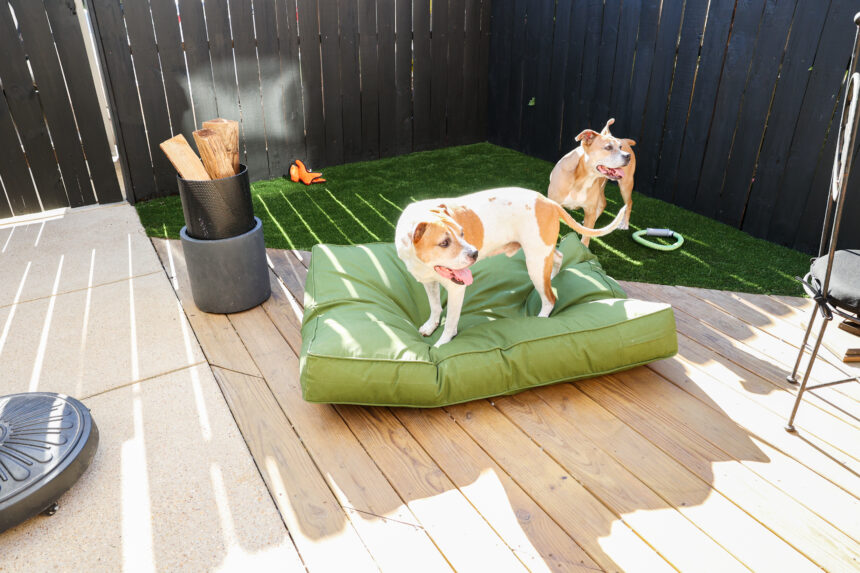Allowing your dog into the backyard might seem like an easy act, but there are a lot of thought that should go into this decision. There are a lot of dangers that dog owners can miss or might not even know about, and these risks can cause injuries or even fatalities in dogs.
A safe yard will allow the dog to run freely, exercise, and enjoy its time when the owner is not available to play. This article states four of the best ways to keep your dog protected in your backyard.
Use Pet-Friendly Lawn Treatments
Dogs can inflict a lot of damage on lawns. They often like to dig, run around, or chew grass, and signs of wear and tear can begin to show quite quickly. When this happens, and you like to have an aesthetically-pleasing lawn, then you will need to treat the yard to encourage greener and thicker growth.
However, before doing this, you will want to use organic fertilizers. This is the safest option when allowing pets out into the backyard. After distributing fertilizer, dogs should not be allowed out until the spray fertilizer has dried or the granules have watered in. By doing this, you are ensuring your dogs are kept safe.
Install Sufficient Pet Fencing
Keeping the backyard secure should be the second step to complete before letting your dog explore the area. This is especially important if you allow your dog roam the yard off-leash. You can achieve a secure backyard with adequate fencing. Whatever barrier you choose to build, it should be high enough to stop your canine from jumping over it and strong enough to prevent the animal from knocking it down.
The type of fence you choose should be selected with your dog in mind. This will include more than just height. Using a chain link fence or wooden fences that have horizontal gaps could give dogs the opportunity to climb the fence. On the other hand, fences with vertical gaps could provide a big enough space for the dogs to squeeze through.
Some dog owners will want an alternative to traditional fencing. For example, underground dog fences do work to keep dogs within the chosen boundaries. These fences will prevent canines from jumping over fences or digging under them. If your dog has become a bit of an escape artist, then an underground fencing system might be the preferred choice.
Remove Poisonous Plants
Unfortunately, there are plants that can be toxic to dogs. Azaleas, daffodils, and other common garden flowers can cause various issues for canines, such as allergic reactions, diarrhoea, and vomiting. Dogs are curious creatures that will sniff and sometimes eat plants, and this can be detrimental to their health, especially if owners are not supervising.
The same can be said for thorns or plants with spines. These types of non-toxic plants can lead to abrasions, eye injuries, and other issues if they are within the dog’s reach.
If these plants cannot be removed, you could install a fence around them to keep your dog away. Either way, the aim is to minimize the risk of your dog being poisoned or injured by plants.
Treat Your Dog for Fleas and Ticks
Not only are flea and tick infestations troubling to get rid of, they can also transmit diseases to your dogs and even yourself at times. Treating your dog for these pests is the best method or prevention. This should be carried out regularly to deter fleas and ticks from biting the dog.
Although pets should be treated with flea and tick prevention regularly, the yard can also be treated to kill any pests. This is essential during the summer when flea and tick season is rife. A combination of crushed rocks and fossilized diatom remnants, which is often called diatomaceous earth, can be used to kill any fleas and ticks in your backyard. It is a natural flea and tick yard treatment, which can be sprinkled in areas your dog roams regularly.
As this post has outlined, there are four main ways to keep your dog safe if it is roaming your backyard freely.






